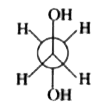Statement-1:PhCOCOCOPh forms stable hydrate
Statement-2:The compound in the hydrate form has intramolecular H-bonding.
Statement-1 is True, Statement-2 is True, Statement-2 is a correct explanation for Statement-1
Statement-1 is True, Statement-2 is True, Statement-2 is NOT a correct explanation for Statement-1
Statement-1 is True, Statement-2 is False.
Statement-1 is False, Statement-2 is True.
The correct Answer is:A
To analyze the statements provided in the question, we will break down the information step by step.
Step 1: Understanding Statement 1
Statement 1: PhCOCOCOPh forms a stable hydrate.
- Analysis: The compound PhCOCOCOPh (where Ph represents a phenyl group) contains multiple carbonyl (C=O) groups. When this compound is mixed with water (H2O), it can undergo a reaction to form a hydrate. In this case, the carbonyl groups can react with water to form hydroxyl (OH) groups, leading to the formation of a stable hydrate.
Step 2: Understanding Statement 2
Statement 2: The compound in the hydrate form has intramolecular hydrogen bonding.
- Analysis: In the hydrate form, the presence of hydroxyl groups allows for the possibility of hydrogen bonding. Specifically, the hydrogen atom of one hydroxyl group can form a hydrogen bond with the oxygen atom of another hydroxyl group within the same molecule. This is known as intramolecular hydrogen bonding. This type of bonding can contribute to the stability of the hydrate.
Step 3: Evaluating the Statements
- Both statements are true:
- Statement 1 is true because PhCOCOCOPh does indeed form a stable hydrate.
- Statement 2 is also true as the hydrate form exhibits intramolecular hydrogen bonding.
Step 4: Determining the Relationship Between the Statements
- Statement 2 provides a reason for the stability of the hydrate mentioned in Statement 1. The presence of intramolecular hydrogen bonding helps stabilize the hydrate form of the compound.
Conclusion
Since both statements are true and Statement 2 correctly explains why Statement 1 is true, the correct answer is:
Option A: Statement 1 is true, Statement 2 is true, and it is a correct explanation of Statement 1.
---
Statement 1: PhCOCOCOPh forms a stable hydrate.
Statement 2: The compound in the hydrate form has intramolecular hydrogen bonding.
- Both statements are true:
- Statement 1 is true because PhCOCOCOPh does indeed form a stable hydrate.
- Statement 2 is also true as the hydrate form exhibits intramolecular hydrogen bonding.
- Statement 2 provides a reason for the stability of the hydrate mentioned in Statement 1. The presence of intramolecular hydrogen bonding helps stabilize the hydrate form of the compound.
Since both statements are true and Statement 2 correctly explains why Statement 1 is true, the correct answer is:
Option A: Statement 1 is true, Statement 2 is true, and it is a correct explanation of Statement 1.
Topper's Solved these Questions
Similar Questions
Knowledge Check
Which of the following conformers of 1, 2-diol cannot form intramolecular H-bond?
A B
B C
C D
D
Which of the following molecule has intramolecular −H bonding.
View SolutionThe compound which does not exist as hydrate form
View SolutionIn acid catalysed hydration of alkenes, reaction intermediate formed is
View SolutionStatement-1: Lithium has highest hydration energy.
Statement-2: Lithium is the stronger reducing agent.
View SolutionStatement-1: Lithium has highest hydration energy.
Statement-2: Lithium is the stronger reducing agent.
View SolutionStatement-1:
 Keto form is less stable than enol form
Keto form is less stable than enol form
and
Statement-2: Enol form is stabilized by aromaticity.
View SolutionStatement-1: Acid catalyzed hydration of (1) involves rearrangement

and
Statement-2 The formed intermediate has potential for rearrangement.
View Solution

